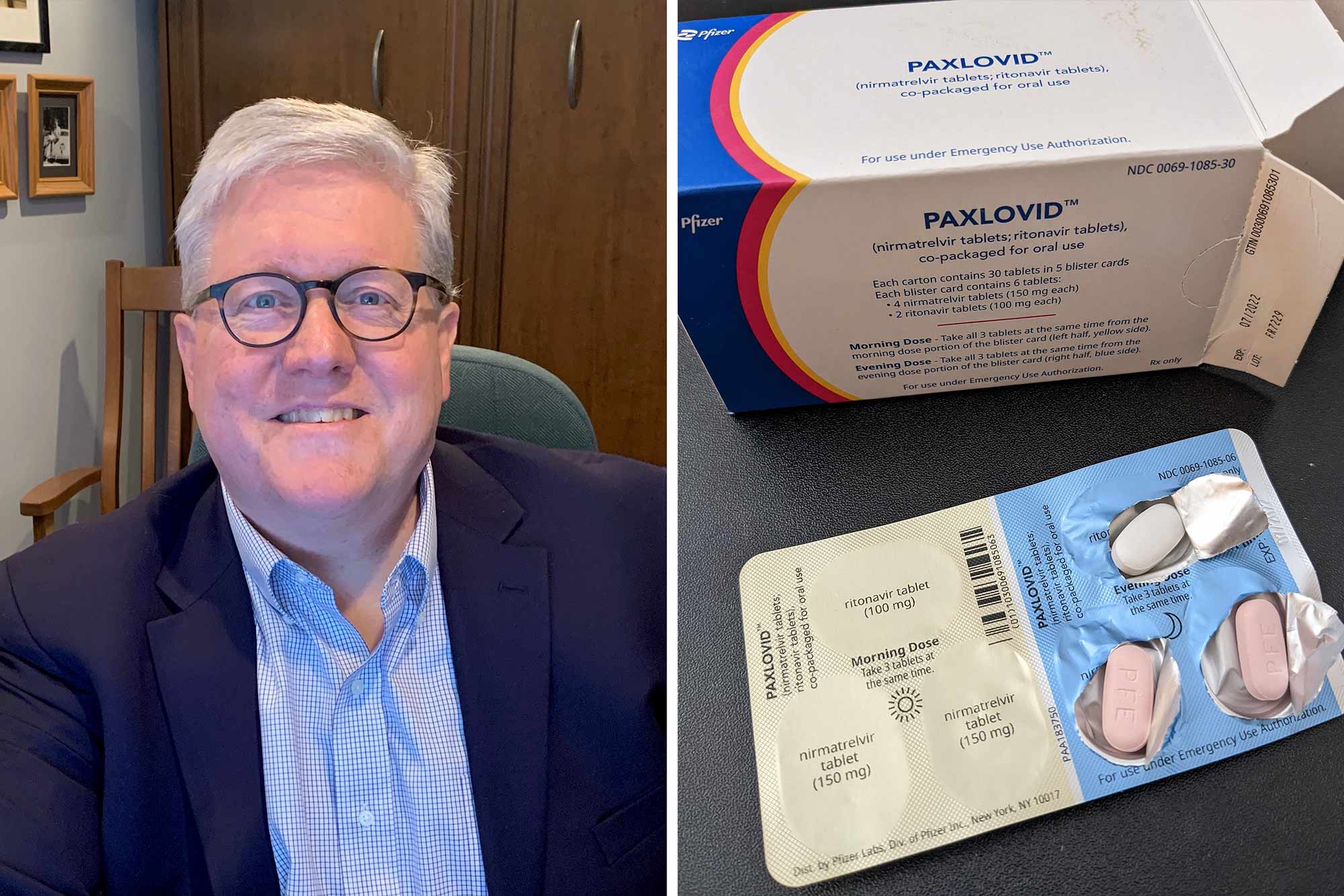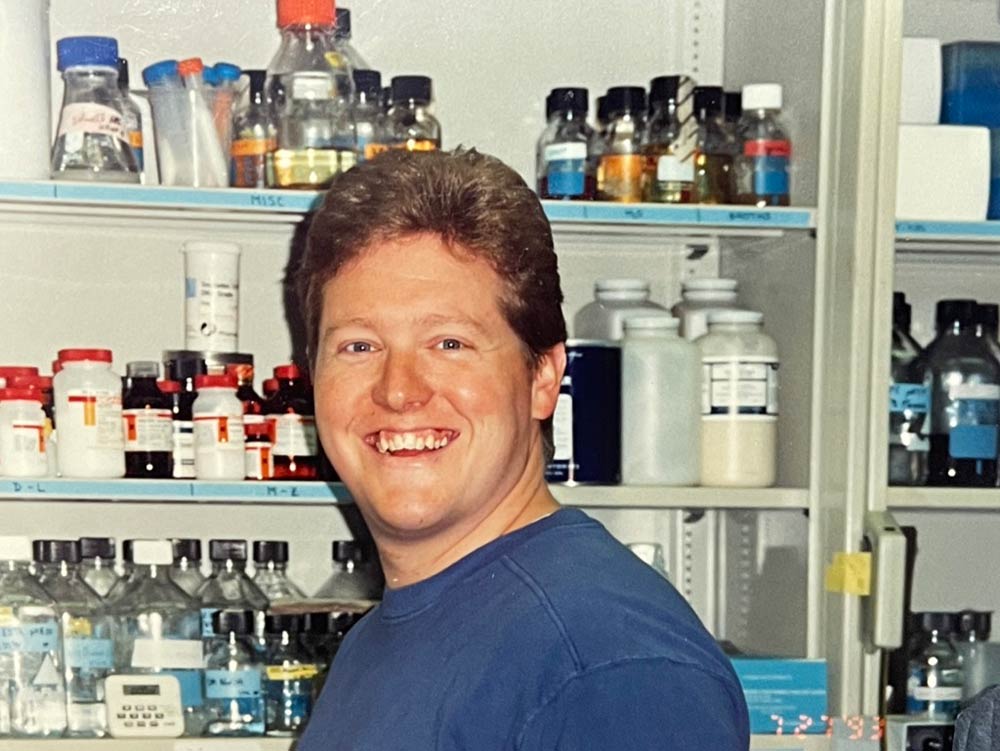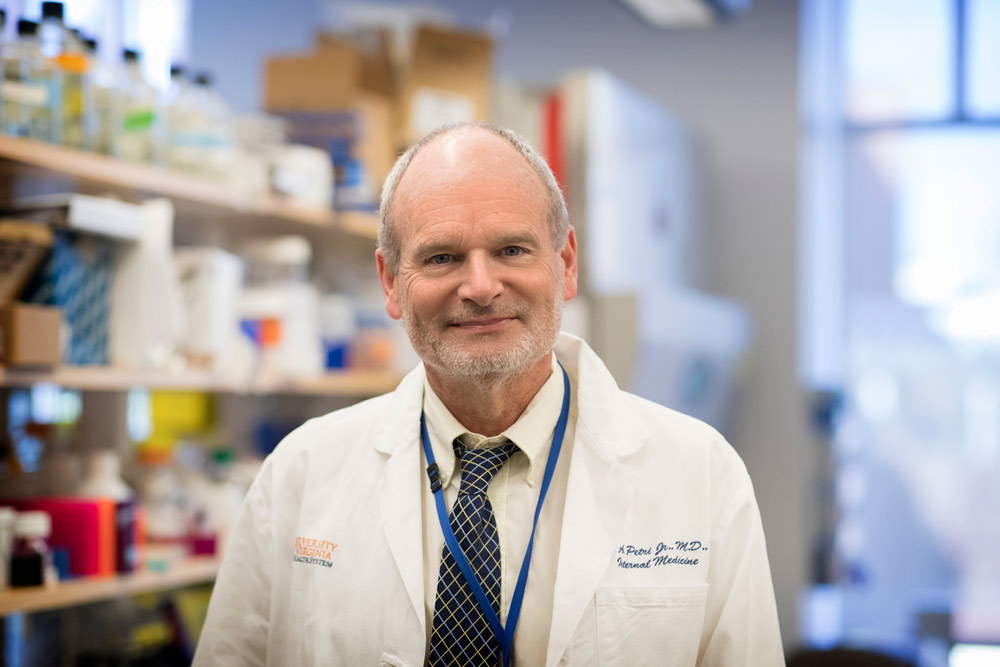Developing His Career
Before Purdy was a vice president at Pfizer, he was a UVA graduate – first in 1995 in microbiology, then in 1997 from the School of Medicine. He completed his residency at the University of Iowa and became a faculty member before moving on to the University of Chicago.
As an assistant professor there, he continued to teach and practice in internal medicine as an infectious disease expert. But something began to feel lacking, he said. He enjoyed his various duties, but direct patient care had become rote rather than the challenge that it had once been. And, “Training, seeing patients and doing research made it hard to see my family.”
Purdy was in the process of applying for research funding – Chicago maintains a coveted R1 university rating because of the high volume of studies it manages to get funded – when Tracy, his wife, asked the question that changed his trajectory – in the middle of an R01 application.
“If you get it, do you still want it?” she asked.
“A lot of the joy had left,” Purdy added. “That’s when I received a call from a headhunter.”
He joined the pharmaceutical company Wyeth in 2008 as an associate director of clinical research. He rose to director of clinical research, then senior director as Pfizer acquired the company, before finally making vice president.
Purdy has spent the majority of his pharmaceutical career working on anti-infectives, which included antibacterial development, vaccines and now antivirals. For a period, though, he also oversaw the vaccine Prevnar-13 for adults. The vaccine provides protection against pneumococcal bacteria – bacteria that can cause pneumonia and lead to other invasive diseases.
Though such breakthroughs are big, Purdy prefers to think smaller. As in less than the size of a strand of protein.
“My real love is small molecules,” he declared.
Seeing Paxlovid to the Next Stage
Now that Paxlovid is widely available, Purdy helps make sure it’s used correctly.
“I work at answering the questions of folks who are going to provide recommendations, physicians who have questions about safety, to make sure the proper and accurate data is available,” he said.
As the drug progresses beyond emergency-use status, he’ll be part of the team creating the extensive drug labeling, also subject to FDA approval.
Pfizer still has some questions to answer about Paxlovid. The most pressing involve the rebound some patients experience after initially feeling better. Is it a normal part of the recovery process? Or is there something different about the way COVID-19 rallies against this drug?
“We see it in patients who receive the drug and patients who don’t receive any antiviral,” Purdy said. “The viral load drops, and then pops up again down the road.”
While Pfizer first estimated about 2% of patients who take the drug experience some sort of “rebound,” a vague term that could indicate a variety of symptoms accompanied by a viral uptick, emerging evidence has opened a discussion about whether that percentage holds true in the current broader population.
Participants in Pfizer’s EPIC-HR study that led to emergency authorization suffered from the delta variant of COVID-19 and were unvaccinated. Researchers are currently investigating rebound in patients suffering from the omicron variant who have been vaccinated. While the ultimate usefulness of Pfizer’s drug is that it targets the conserved protease inhibitor (rather than the coronavirus’ spike proteins), and is effective at doing so across strains, Pfizer is closely monitoring for the development of drug resistance.
“When you have first report of an adverse event, there will be more adverse events reported, and there’s nothing wrong with that,” Purdy said. “I think all physicians everywhere on the globe are participating in this discussion. Everyone has an important role to play, from patient to physician, from pharmaceutical company to government agencies.”
In collaboration with other researchers, Pfizer hopes to fill gaps in medical knowledge, he said, as well as to test Paxlovid’s other potential applications and constraints.





